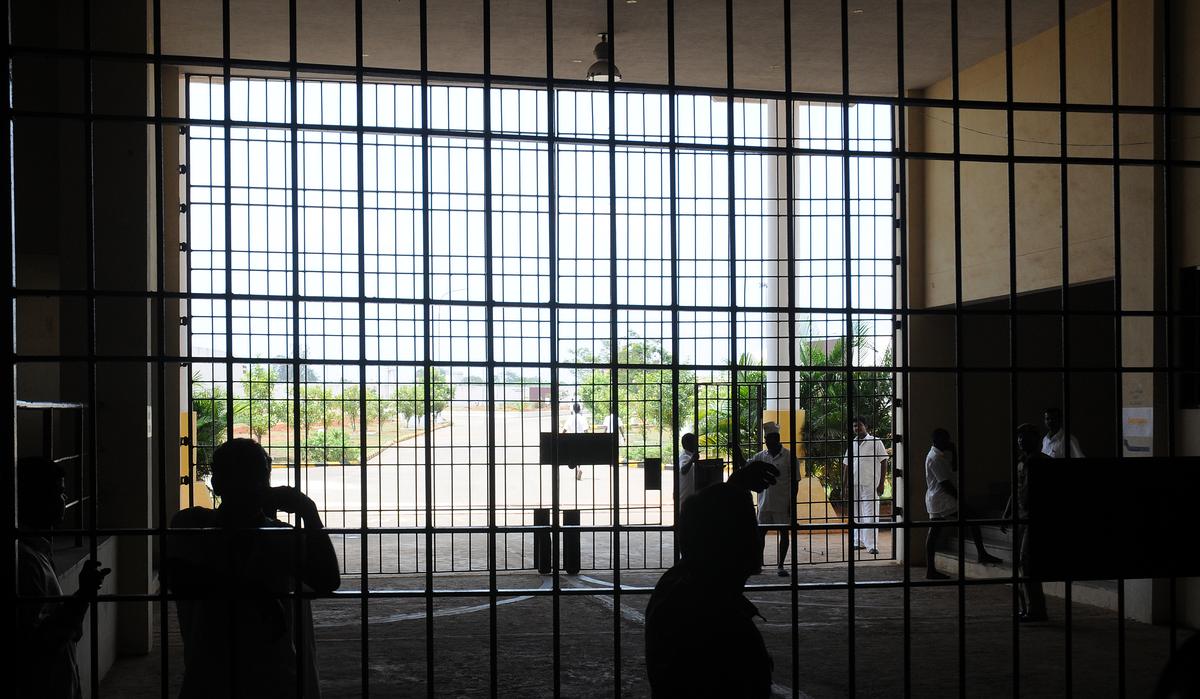Issue of Overcrowded Prisons in India: The Role of Electronic Monitoring (GS Paper 2, Governance)

Why in News?
- India's prison system is grappling with significant overcrowding, which has strained the resources and effectiveness of correctional facilities.
- A recent report from the Supreme Court’s Centre for Research and Planning has highlighted the issue and proposed the use of electronic tracking devices as a potential solution.
- This marks a notable shift in India’s approach to prison management and reform.
Statistics on Overcrowding of Prisons in India
- As of December 31, 2022, India’s prisons were operating at 131% of their capacity, with 573,220 inmates housed in facilities designed to accommodate only 436,266 individuals.
- The overcrowding crisis is further exacerbated by the high number of undertrial prisoners (UTPs), who constitute 75.7% of the total prison population, a reflection of delayed judicial processes and lengthy pre-trial detentions.
Key Recommendations in the Report on Prisons in India
The "Prisons in India – Mapping Prison Manuals and Measures for Reformation and Decongestion" report, released by the President of India, suggests several reforms to address this crisis. Notably, it recommends the phased implementation of electronic monitoring for undertrial prisoners (UTPs) as a means of reducing overcrowding. The key aspects of this proposal include:
- Targeting low to moderate-risk UTPs with good conduct for initial trials of electronic monitoring.
- Phased implementation: The process would be gradual, first assessing community readiness and the feasibility of this technology before broader application.
Global Practices and Indian Legal Context on Electronic Monitoring of Prisoners
Globally, countries such as the US, UK, Canada, Malaysia, and Australia have adopted electronic monitoring systems, effectively alleviating prison overcrowding and reducing costs. These systems typically use electronic ankle bracelets or GPS tracking to monitor individuals who are either awaiting trial or have been granted parole or furlough.
In India, the legal framework has started to evolve in response to overcrowding issues:
- Model Prisons and Correctional Services Act, 2023: This Act introduced electronic tracking devices as a condition for granting leave to prisoners, allowing for more flexible management of those eligible for release.
- Law Commission of India’s 2017 Report: The report acknowledged the potential of electronic tagging to reduce costs and improve prison security, though it also cautioned about its ethical implications.
- Judicial Developments: Indian courts have imposed location-tracking as a condition for bail in some cases, though the Supreme Court has expressed concerns about constant surveillance, emphasizing the need for clear guidelines to balance security with individual rights.
Benefits of Electronic Tracking of Prisoners
The adoption of electronic monitoring could offer several benefits:
- Prison Decongestion: Electronic tracking can help reduce the number of inmates in overcrowded prisons by allowing low-risk prisoners, particularly undertrials, to be monitored outside prison walls.
- Mental Health Benefits: Electronic monitoring allows prisoners to maintain family connections, reducing the psychological toll associated with long-term imprisonment and isolation.
- Cost-Effectiveness: Managing prisoners through electronic means can significantly lower the financial burden of maintaining overcrowded prisons, including costs related to security and infrastructure.
- Rehabilitation Incentives: By linking electronic tracking to parole or furlough eligibility, prisoners can be encouraged to display good behavior, improving their chances of reintegration into society.
Concerns and Safeguards for Electronic Tracking of Prisoners
Despite its potential, the proposal to use electronic monitoring faces several challenges:
- Risks of Misuse: There is a concern that the widespread use of electronic tracking could lead to infringement of civil liberties, particularly if applied universally without proper oversight. The technology could be misused, leading to undue surveillance and violation of privacy.
- Operational Challenges: Implementing electronic tracking on a large scale in a country with diverse infrastructure and resources could present logistical difficulties. Ensuring equitable access and ensuring the reliability of tracking devices are key concerns.
- Ethical Issues: There is a need to establish clear guidelines for the use of electronic monitoring, ensuring that it does not undermine the fundamental rights of prisoners. Strict safeguards must be put in place to protect against misuse while achieving the goal of decongesting prisons.
Conclusion
- The idea of using electronic tracking devices to address overcrowding in India’s prisons presents a promising solution, particularly for undertrial prisoners who account for a significant portion of the inmate population.
- Countries worldwide have shown that this technology can reduce prison populations, lower costs, and help with the rehabilitation of prisoners.
- However, the success of this approach in India depends on a carefully regulated implementation that balances the benefits of technology with the protection of individual rights.
- Ensuring clear guidelines, safeguards against misuse, and a phased rollout will be essential in addressing the challenges of overcrowding without compromising the principles of justice and fairness.


